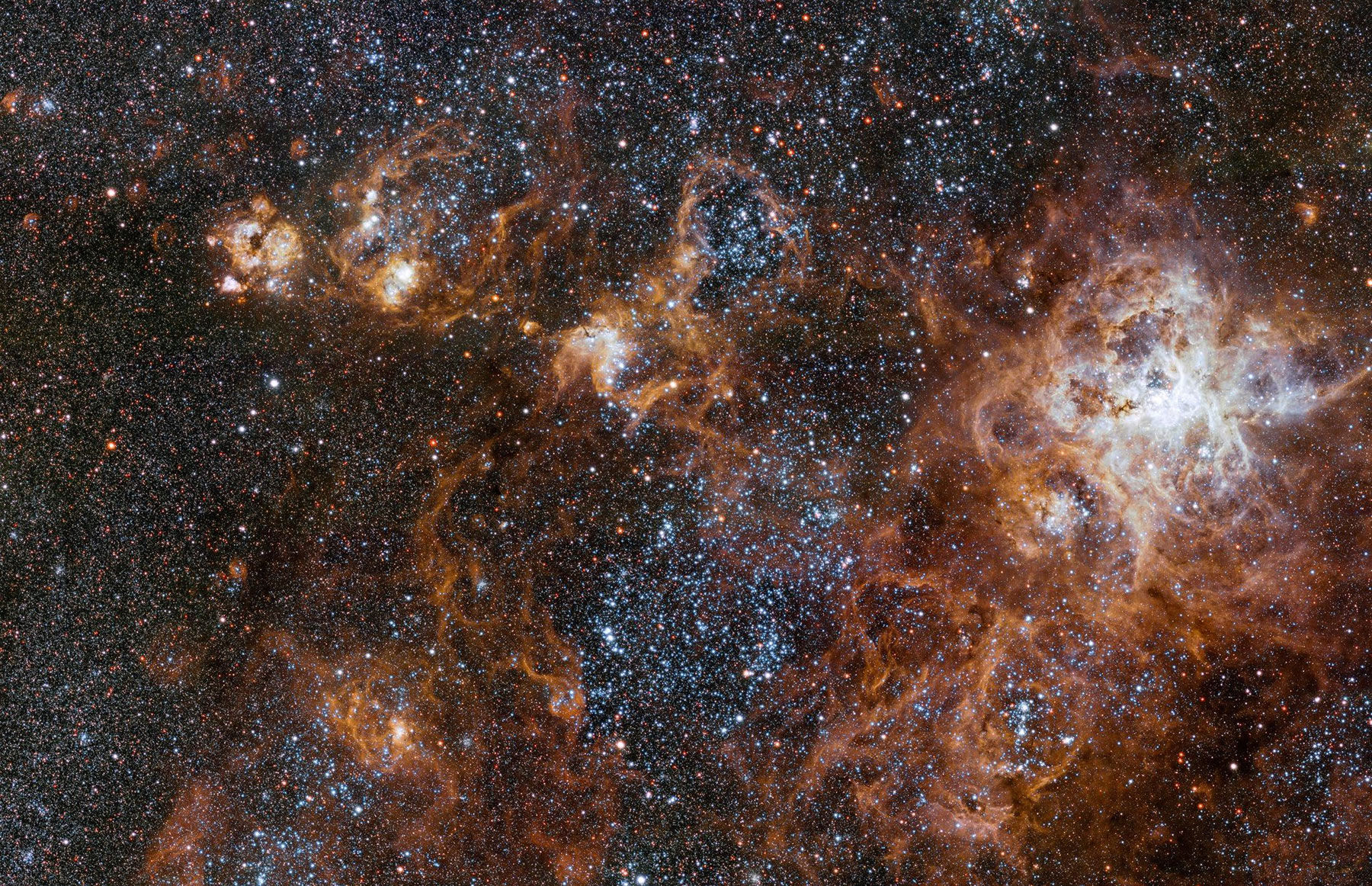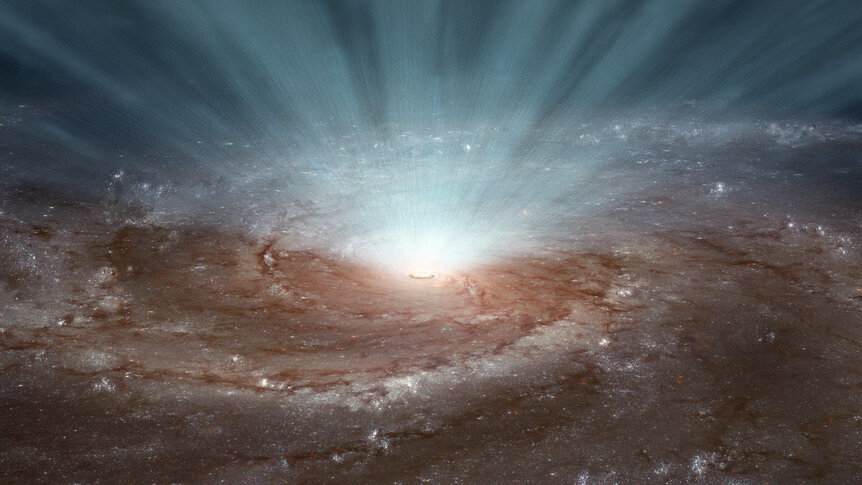Create a free profile to get unlimited access to exclusive videos, sweepstakes, and more!
A huge distant galaxy went from making billions of stars to suddenly stopping. Why?

Astronomers have found a very massive galaxy nearly clear across the Universe. It has something like 300 billion stars in it, so it's actually more stelliferous than even our own Milky Way. Because it's so far away we see it as it was when it was very young, which in turn means it made a lot of stars extremely quickly. That's unusual for a galaxy at that distance but not unprecedented.
What's weird is that it's not making stars anymore. It just… stopped. And given that it was making stars at a rate a thousand times faster than the Milky Way does, that's very weird indeed.
The galaxy is called XMM-2599. It was discovered to be a distant galaxy when an infrared survey examined deep observations taken using the space-based XMM-Newton X-ray observatory, and saw it was very bright in the infrared. Looking at its colors (how bright it is in different filters) they could determine it's really far away and therefore pretty massive and luminous. They followed up those observations by taking a spectrum using the 10-meter Keck telescope, and got a pretty firm redshift for it, indicating the light we see left it 11.9 billion years ago! That means we're seeing it as it was when the Universe itself was just under two billon years old. So, pretty young.
Given the distance, the spectrum shape indicates it's massive, with roughly 300 billion stars. That's interesting! In fact, it's a little terrifying: To get that many stars so quickly, it must have been cranking them out at an nearly incomprehensible rate when it was a little bit younger. The Milky Way, on average, makes about one Sun's mass worth of stars every year. That's about average for a galaxy like ours, more or less.
But to reach 300 billion stars in less than 2 billion years means it must have been forming them at a rate of 1000 solar masses per year! That's phenomenal. A galaxy in the nearby Universe making stars at that rate would be ridiculously luminous. It would also be extraordinarily bright in ultraviolet: Making that many stars means making lots of very massive, hot, luminous stars, and those blast out UV light.
Here's the thing, though: XMM-2599 isn't luminous in UV. At all. Bizarrely, the spectrum makes it pretty clear that by the time it sent off that light to us, it had already stopped making stars.
In other words, it went from tribble-like fecundity to being totally quiescent in just a few hundred million years. Maybe less. That's extremely weird.
We call galaxies like this quenched. Stars form from gas clouds — some event makes them collapse (perhaps when these giant clouds collide) and stars are born when clumps in the cloud shrink down via gravity, heat up, and switch on nuclear fusion.
Now back in the day, a few billion years after the Big Bang, most galaxies were being fruitful. The Milky Way produced stars at a much faster clip than it does now. But some don't, and it's not clear why. Simulations of those times show a handful of galaxies are quenched, but observations indicate that the simulations underestimate reality by a factor of 3–30! So something's going on to quench those galaxies that we've missed so far.
But even then, we're talking about 3-4 billion years post-Big Bang. XMM-2599 was quenched long before then, and after a supercharged star-making frenzy. What could do that?
Yeah, that's the sticky bit. The astronomers who observed it aren't sure. Galactic collisions can fuel star formation, and they were common around that time. Maybe in this volume of space they stopped colliding for some reason — though I can't think of any reason they would stop so suddenly unless XMM-2599 basically ate every galaxy around it, leaving no more to collide with. Even then, the way starbirth shut down so quickly is hard to understand.
They also posit that perhaps the galaxy has a supermassive black hole in its core that is actively feeding. When that happens the material piling up around the black hole gets extremely hot and starts to blow a fierce wind of subatomic particles. If the wind is strong enough it can blow the gas out of the galaxy, suppressing star formation. It would have to be a huge wind to do that, since the galaxy is massive and therefore has a strong gravitational field, capable of holding on to the gas pretty well. Plus in most cases I'd think if the galaxy were active this way it would be pretty obvious because it would be blasting out light. That's not seen, but that's not proof it's not happening.
So it's a mystery. What could shut off the star spigot so rapidly in a galaxy so big and so young? Whatever it is, when astronomers figure it out it'll be something that tells us more about conditions in the very early Universe when galaxies, even ours, were just getting started. We do know some things about that era, but investigating it is hard because those galaxies are now so far away, faint and small. But we keep getting better at this, and I expect we'll have a solution to this soon.
But by then new mysteries will turn up, too. That's the nature of the beast here, and one reason doing this sort of work is so much fun.
![An infrared image of the distant and very young galaxy XMM-2599 indicates it’s more massive than the Milky Way, but peculiarly is no longer forming new stars [J, H, and K refer to infrared colors, and the scale bar is 2 arcseconds]. Credit: Forrest et al.](/sites/syfy/files/styles/scale_862/public/xmm-2599_infrared.jpg)




























